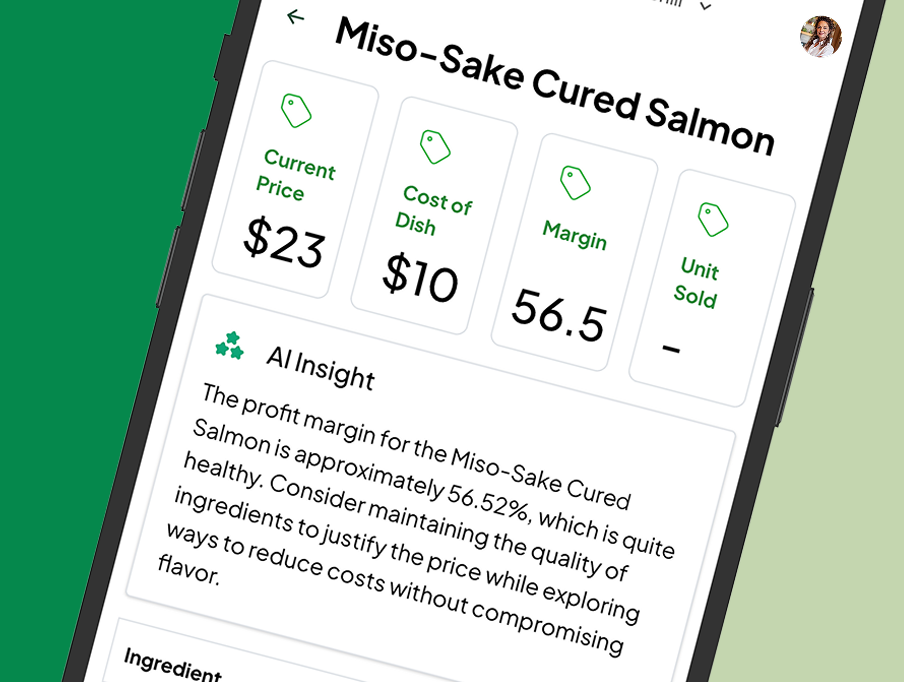For restaurant owners, few challenges are as persistent and pressing as the cost-versus-quality dilemma. Diners expect fresh, high-quality ingredients, but sourcing them at a sustainable cost can feel like an uphill battle. Should you invest in premium products and adjust your menu prices accordingly? Or should you seek more affordable alternatives and risk compromising the dining experience?
This balancing act has become even more complex in today’s economic landscape. Rising food costs, supply chain disruptions, and shifting consumer expectations make ingredient sourcing a financial tightrope walk. Cutting corners on quality isn’t an option—especially when a single online review can make or break a restaurant’s reputation.
At MRGN, we understand that the key to solving this dilemma isn’t just about finding cheaper suppliers. It’s about making data-driven decisions that allow you to maintain quality without sacrificing profitability.
The True Cost of High-Quality Ingredients
Investing in premium ingredients doesn’t just mean higher food costs—it influences nearly every aspect of a restaurant’s operations, including pricing, customer perception, and operational efficiency.
1. Menu Pricing
When ingredient costs rise, many restaurants feel pressured to increase menu prices. However, price-sensitive customers may push back, leading to lower sales volume. The challenge lies in finding a pricing strategy that reflects quality while remaining competitive.
2. Customer Expectations
Diners who pay for high-quality ingredients expect consistency. Any change in the taste, texture, or portion size of a dish will be noticed. If customers feel they are getting less value, they may take their business elsewhere.
3. Operational Costs
Premium ingredients often come with additional costs beyond their sticker price. They may require specialized storage, have shorter shelf lives, or demand more skilled labor to prepare properly. Mismanaging these factors can result in waste and decreased profitability.
Industry benchmarks suggest that food costs should ideally be 28-35% of total revenue. However, without careful monitoring and strategic adjustments, this percentage can quickly escalate, cutting into already thin profit margins.
Why Customers Demand High-Quality Ingredients
Today’s diners are more informed and health-conscious than ever. They scrutinize ingredient sourcing, read nutrition labels, and expect transparency about where their food comes from. A recent study by Technomic found that 74% of consumers prioritize quality ingredients when choosing a restaurant.
However, while customers value high-quality ingredients, they are also price-conscious. 66% of diners say they would stop frequenting a restaurant if prices increased significantly. This paradox presents a unique challenge for restaurateurs: how to deliver quality without scaring off cost-sensitive patrons.
Strategies to Balance Cost and Quality
Rather than making drastic changes—such as switching to cheaper suppliers or increasing prices across the board—consider implementing these strategic approaches:
1. Use Data-Driven Purchasing Decisions
Tracking ingredient costs in real-time allows you to make informed decisions about purchasing and pricing. Platforms like MRGN can help by:
- Monitoring price fluctuations so you can anticipate cost increases and adjust accordingly.
- Analyzing sales trends to determine which dishes generate the best margins.
- Identifying waste patterns to cut unnecessary expenses.
For example, if data shows that a high-cost ingredient is often wasted, you may want to adjust portion sizes or source a more cost-effective alternative.
2. Optimize Your Menu Design
Not every dish on your menu needs to feature the most expensive ingredients. Consider:
- Highlighting signature dishes that justify premium pricing while balancing the menu with lower-cost options.
- Reworking recipes to use high-quality ingredients in smaller amounts without sacrificing flavor.
- Implementing seasonal menu rotations to take advantage of cost-effective, in-season ingredients.
Fast-casual chains like Chipotle and Sweetgreen excel at this strategy—maintaining quality while designing menus that optimize both cost and appeal.
3. Leverage Supplier Relationships
Building strong partnerships with suppliers can lead to better pricing, early access to seasonal ingredients, and flexible payment terms. Some ways to optimize supplier relationships include:
- Negotiating bulk discounts for staple ingredients.
- Sourcing from local farms to secure fresher produce at competitive prices.
- Exploring alternative vendors to reduce dependency on a single supplier and improve bargaining power.
4. Reduce Waste Without Compromising Quality
Food waste is a major contributor to high ingredient costs. In the U.S. alone, restaurants waste approximately 11.4 million tons of food per year. Reducing waste can free up capital to invest in better ingredients without raising prices. Some practical steps include:
- Implementing portion control to ensure consistency and minimize waste.
- Cross-utilizing ingredients across multiple dishes to prevent spoilage.
- Using FIFO (First In, First Out) inventory management to minimize food expiration losses.
By cutting waste, you create financial room to continue using premium ingredients without increasing expenses.
5. Communicate Value to Customers
If you’re investing in high-quality ingredients, let your customers know! Storytelling is a powerful tool in justifying premium pricing and building customer loyalty. Use:
- Menu descriptions that emphasize premium sourcing (e.g., “Grass-Fed Wagyu Burger” instead of just “Beef Burger”).
- Social media to showcase behind-the-scenes footage of your sourcing process and supplier partnerships.
- Table cards or QR codes linking to an explanation of your ingredient philosophy and sourcing standards.
When customers understand the value of quality ingredients, they’re more likely to accept premium pricing and appreciate the dining experience.
Making Quality Profitable
Striking the right balance between ingredient quality and cost isn’t about making sacrifices—it’s about making smarter choices. With the right data, supplier relationships, and menu strategies, restaurants can maintain quality while protecting their bottom line.
At MRGN, we help restaurants track ingredient costs, optimize menus, and make informed financial decisions to stay profitable in a competitive industry. Because when every penny counts, smarter spending—not cutting quality—is the key to success.
Want to see how MRGN can help your restaurant stay ahead of rising food costs without compromising on quality? Learn more here.


